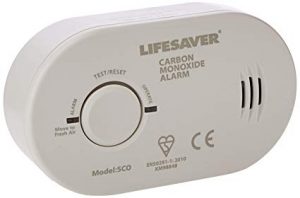Carbon Monoxide Poisoning.
Here is a quick introduction video about the dangers of Carbon Monoxide Poisoning. Remember, Carbon Monoxide can come from any fossil fuel or wood burning appliance.
What is carbon monoxide- why is it a problem?
Carbon monoxide (CO) is a colourless, odourless, tasteless, poisonous gas produced by incomplete burning of carbon-based fuels, including gas, oil, wood and coal. Carbon-based fuels are safe to use. It is only when the fuel does not burn properly that excess CO is produced, which is poisonous. When CO enters the body, it prevents the blood from bringing oxygen to cells, tissues, and organs.
You can’t see it, taste it or smell it but CO can kill quickly without warning. According to the HSE around 50 people a year die from CO poisoning caused by appliances and flues that have not been properly installed, maintained or that are poorly ventilated. Levels that do not kill can cause serious harm to health if breathed in over a long period. In extreme cases paralysis and brain damage can be caused as a result of prolonged exposure to CO. Increasing public understanding of the risks of CO poisoning and taking sensible precautions could dramatically reduce this risk.
What preventative measures can I take against carbon monoxide exposure?
Ensure that any work carried out in relation to any carbon burning fuel appliances in domestic or commercial premises is to be undertaken by a competent and qualified person.
Always make sure there is enough fresh air in the room containing your appliance. If you have a chimney or a flue, ensure it is not blocked up and also ensure that vents are not covered.
Get your chimney swept from top to bottom at least once a year by a qualified sweep.
If you have appliances that use other fossil fuels, make sure they are serviced and maintained by a competent person.
Why chimney maintenance is important
When fuels burn in an appliance, the fumes that are the by-products of combustion – including carbon monoxide – are released into the chimney. Removing these fumes from the living area is the main purpose of a chimney. In addition to carrying off toxic gases, chimneys also create the draft (flow of air) that provides the proper air and fuel mixture for efficient operation of the heating appliance. Unfortunately, many chimneys in daily use in homes throughout the country either are improperly sized or have conditions that make them unable to perform their intended function.
Use of carbon monoxide alarms?
If you have a fossil fuel burning appliance then you are strongly recommend to use one of the audible carbon monoxide (CO) alarms as a useful back-up precaution but they must not be regarded as a substitute for proper installation and maintenance of your appliances. Before purchasing a CO alarm, always ensure it complies with British Standard EN 50291 and carries a British or European approval mark, such as a Kitemark. CO alarms should be installed, checked and serviced in line with the manufacturer’s instructions.
You can be particularly at risk from CO poisoning when you are asleep, because you may not be aware of early CO symptoms until it is too late. Having an audible CO alarm could wake you and save your life.
Here is an example of a BS/EU compliant CO alarm. Note the kite mark and the CE mark.

CO Alarm with Kite mark and CE mark
What are the symptoms of carbon monoxide poisoning?
Early symptoms of carbon monoxide (CO) poisoning can mimic many common ailments and may easily be confused with food poisoning, viral infections, flu or simple tiredness. Symptoms to look out for include:
- headaches
- breathlessness
- nausea
- dizziness
- collapse
- loss of consciousness
- tiredness
- drowsiness
- vomiting
- pains in the chest
- stomach pains
- erratic behaviour
- visual problems
For more information visit the NHS or telephone NHS Direct on 0845 4647.
If you or your family experience any of the above symptoms and you believe CO may be involved, you must seek urgent medical advice from either your GP or an accident and emergency department. You should ask for a blood or breath test to confirm the presence of CO. Be aware, CO quickly leaves the blood and tests may be inaccurate if taken more than four hours after exposure has ceased.
What should I do if I think my appliance is spilling carbon monoxide?
Switch off the appliance and do not reuse until remedial action has been taken by a qualified person
Open all doors and windows to ventilate the room – do not sleep in it
Visit your GP urgently and tell him/her that you believe your symptoms may be related to carbon monoxide poisoning and request either a blood and/or breath sample.
